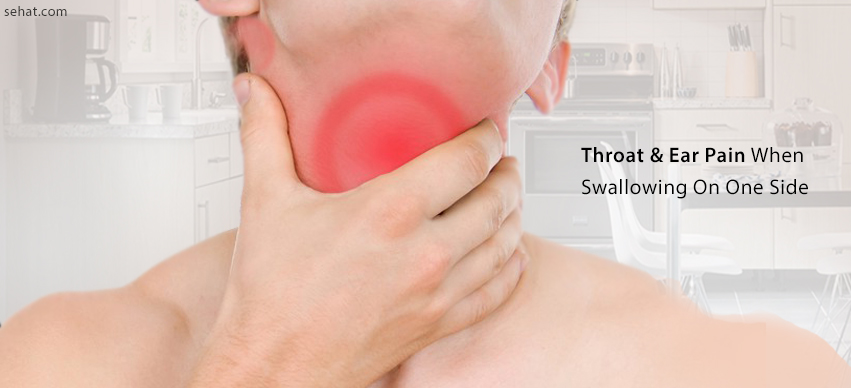How Communities Are Changing the Way We Think About Aging in..
8 Min Read


We all have experienced throat pain at some point in our lives due to various reasons. This pain in throat and ear can be present due to a variety of causes ranging from common cold, cough to tonsillitis or an ear infection.
In humans, the throat is connected to the middle ear canal by a small tube-like structure called the Eustachian tube. This Eustachian tube works in the following ways:
Occasionally, in case of upper respiratory tract infections, the infection tends to spread to the middle ear through the Eustachian tube. The Eustachian tube itself may get infected and cause signs and symptoms such as ear pain, dizziness, and difficulty in hearing.
This article will help you understand all the possible causes for the throat and ear pain on one side while swallowing along with its treatment and home remedies.
Several possible causes for the throat and ear pain on one side while swallowing are listed in the table below
| Sr. No. | Causes | Description |
| 1. | Otitis Media | It is an inflammation and infection of the middle ear usually as a result of upper respiratory tract illnesses such as sore throat or common cold infections which spread to the ear. Otitis media is a fairly common problem among children and tends to recur and become chronic. |
| 2. | Tonsillitis | Bacterial or viral infection of the tonsils is called tonsillitis. Acute infection of the tonsils causes tonsils to enlarge resulting in pain in the throat while swallowing. Tonsils appear red with the occasional presence of white patches on them. Throat pain also often radiates to the ear due to the involvement of the eustachian tube causing ear pain and dizziness. |
| 3. | Peritonsillar Abscess | The condition is also called quinsy. It occurs due to inflammation of the peritonsillar space leading to a collection of pus or formation of abscess around the tonsils. Peritonsillar abscess is a fairly painful condition that causes throat pain often radiating to the ear. Peritonsillar abscess is mostly one-sided and causes pain in the throat and ear on one side along with difficulty in swallowing food. The patient may also complain of pain while opening the mouth. |
| 4. | Glossopharyngeal Neuralgia | This is a rare yet a very painful condition in which the patient complains of an intense stabbing, shock-like pain in throat and base of the tongue which is worse from swallowing food or drinks, talking, chewing or even coughing. Complaints arise due to inflammation, irritation or compression of the glossopharyngeal nerve (provides nervous supply to the base of tongue and tonsils) |
Treatment for the throat and ear pain while swallowing will entirely depend upon the underlying cause. Treatment options for throat and pain one side can be the following:
Along with medications, appropriate diet and certain home remedies play a major role in enhancing the process of healing and recovery especially in cases of infection of the upper respiratory tract and middle ear. Some home remedies for the throat and ear pain on one side while swallowing include:
Salt water gargling helps to reduce throat pain as it is difficult for bacteria to survive in a saline environment. Frequent gargling also prevents bad breath during illness and soothes the throat.
Indian kitchen is the best place to find natural antimicrobial agents such as turmeric, garlic, ginger, and cinnamon and so on. These foods when consumed during respiratory or ear infections, work beneficially to reduce infection and inflammation and promote faster healing.
Throat pain while swallowing often leads to loss of appetite. To keep yourself well hydrated, yet full, it is important to drink plenty of liquids such as warm water, green tea, warm soups and broths or juices.
Avoid consuming fermented foods such as curd as they tend to worsen the infection.
These are the best source of antioxidants, vitamins, and nutrients required for quicker recovery.
TC medicines like paracetamol can be consumed if you have a fever, lozenges to get relief from throat pain or ORS sachets to maintain proper hydration.
7. In case of ear infections, avoid indulging in activities which include exposure to water. Presence of moist environment within the ear impedes recovery from an ear infection and worsens the condition.
8. Strictly avoid alcohol because if you are already on medications, alcohol can interact with the medications and cause drug reactions.
9. Avoid cigarette smoking as the smoke can increase throat pain and irritation.
If you haven’t consulted a doctor yet and are trying to get rid of the throat pain with the help of home remedies, you need to visit a doctor under the following circumstances:
Throat and ear pain on one side when swallowing is seen commonly during upper respiratory viral infections and is not something to worry about. The complaints generally subside with the help of some dietary restrictions, adequate rest and home remedies.